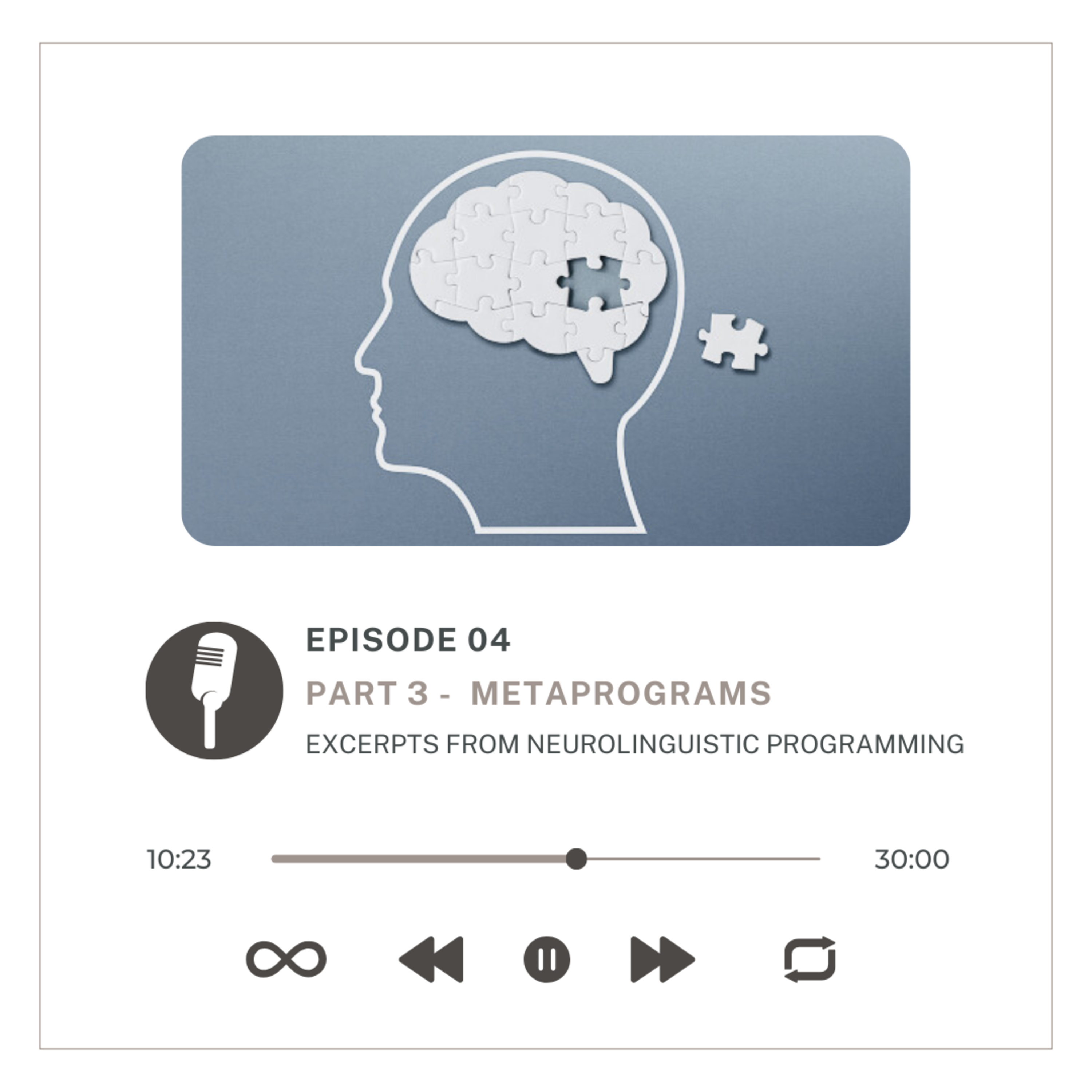Neuro Linguistic Programming Episode Part 3 : Understanding Metaprograms - List of Metaprograms
- Author
- Jardine Ong
- Published
- Mon 12 Jul 2021
- Episode Link
- https://podcasters.spotify.com/pod/show/jardine-ong/episodes/Neuro-Linguistic-Programming-Episode-Part-3--Understanding-Metaprograms---List-of-Metaprograms-e14a91h
Welcome everyone to Corporate Learning Excerpts. My name is Jardine.
Today’s topic is Part 3 of Understanding Metaprograms, a topic of Neuro Linguistic Programming, we will talk about some sets of metaprograms today.
So let’s begin.
There are a lot of meta-programs that have been identified. The exact figure changes all the time as some meta-programs are merged with other similar meta-programs and new meta-programs are added to the list. I’ll be going over some today. When I am going over the list, think of yourself and identify which metaprogram you most associate with, most of the time. You might be asking, can my metaprograms change? Yes, they can change over time and adapt as you come across new information and expand understanding of your life and circumstances.
So when you are doing this, ask yourself these questions related to your life : Given what you want in your life, is this helpful or hurtful? Do you need to make any changes? Keep these questions in mind as you work through each type of metaprogram
Lets start with our first set : Options vs Procedures, it gives an insight on how you want to do something.
Metaprogram Set #2 : Specific vs General Information
Metaprogram Set #3 : Proactive or Reactive
Metaprogram #4 : External Frame of Reference vs Internal Frame of Reference
Metaprogram #5 : Goal vs Consequences
Metaprogram #6 : Match vs Mismatch
Metaprogram #7 : Similarities vs Differences
Metaprogram #8 : Positive vs Negative
Metaprogram #9 : Solutions vs Problem
Metaprogram #10 : Intuition vs Sensing
Metaprogram #11 : Self vs Others
Metaprogram #12 Independent, Proximity, Cooperative
Now that you know atleast some of common Metaprograms which shows you more ways of seeing things, the key here is flexibility. And the idea is for you to check the usefulness of your own metaprograms to help you achieve your most valuable outcomes. Learning to change your own metaprograms is through repetition by simply practicing a different way than yours. Aside from that you’ve got the rest of the world to communicate with, and sometimes when you don’t see eye to eye, perhaps it’s simply because they are seeing what you are seeing through a different set of metaprograms.
So that’s it for your list of metaprograms.
P.S. I am limited with the word count here so write to me to request the materials with the full text
Part 4 coming soon,
Jardine
